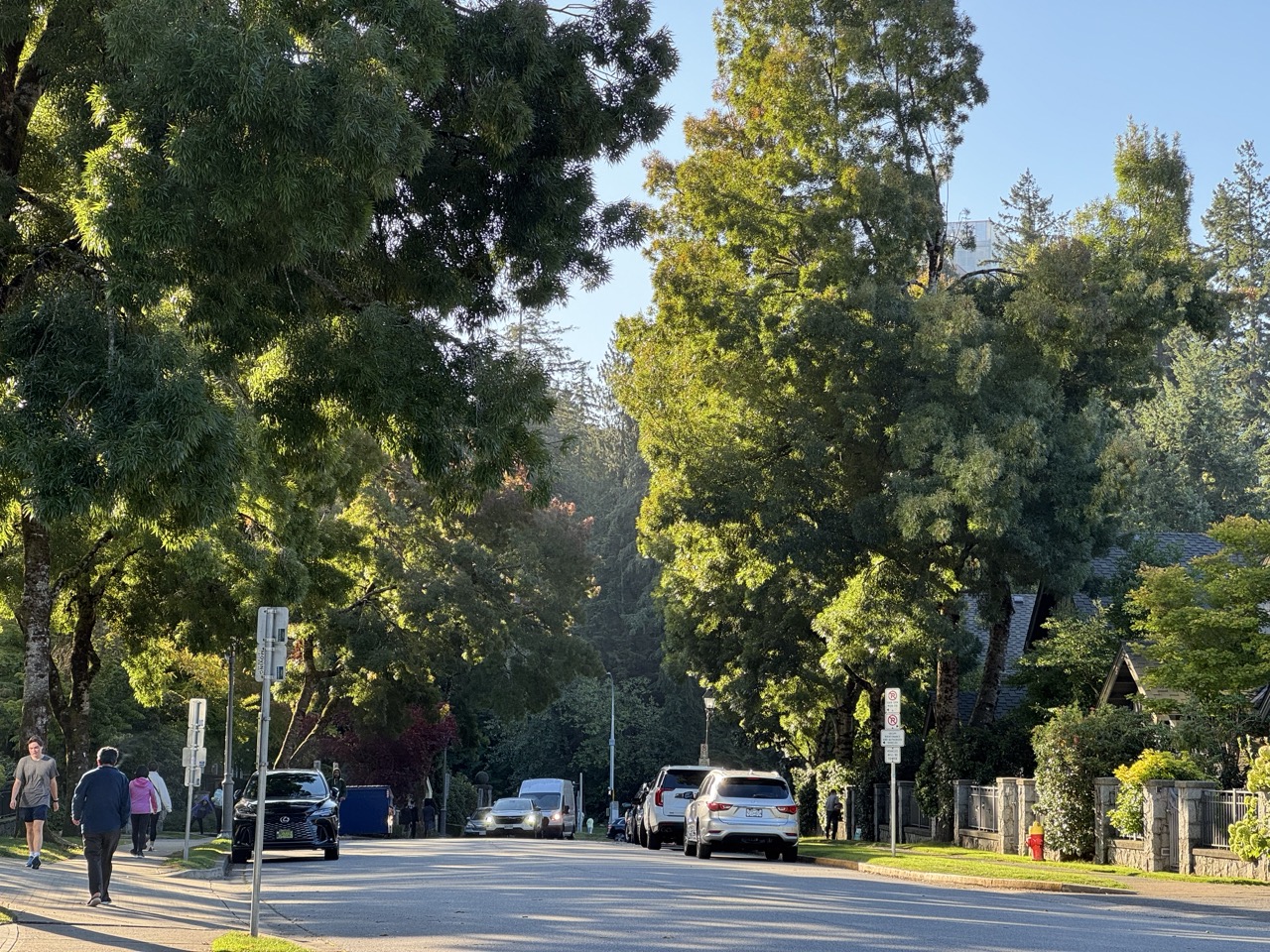Two residents from Hampton Place asked the UNA board during their September meeting to proactively cut down a number of ash trees that are susceptible to infestation from an invasive beetle.
Presentations on the risks posed by the trees were made by the president of the Sandringham housing development strata and another resident of the Hampton Place neighbourhood.
The Sandringham Strata president said the neighbourhood’s larger ash trees pose a hazard to residents and parked vehicles due to falling branches, and the ash trees are uniquely vulnerable to infestation by the emerald ash borer.
The emerald ash borer is an invasive beetle that infests ash trees before killing them in two to four years. The Canadian Food Inspection Agency confirmed the presence of the beetles in Vancouver in the spring of 2024 and is currently working with the City of Vancouver to halt their spread. Current regulations stipulate that infested ash trees must be incinerated as part of their disposal, which could increase the future costs of removing Hampton Place’s trees.
The 2024 Neighbors Agreement places responsibility with the UNA for maintaining trees along roads and parks. A 2020 survey found that the UNA is currently managing over 2,700 trees in the public realm.
In response to the request from the Sandringham delegation to have the UNA share half the costs of removing the ash trees, UNA Staff noted that a Metro Vancouver survey found that the ash trees are within the legally defined property area of the Sandringham development.
Sandringham’s strata is currently in talks with UBC Properties Trust regarding responsibility for the ash trees. UNA Director Ronald Bourgeois stated that as many of the tree’s roots intruded into the public realm, he believed that the costs of removing the ash trees should be shared between the UNA and Sandringham.
Board chair Eagle Glassheim responded by pointing out that under provincial law, the intrusion of the tree roots alone does not merit joint responsibility.
Director Bourgeois urged the UNA board to take a proactive approach in facilitating a resolution regarding the ash trees.
UNA staff said they are currently assessing whether the trees can be kept and treated with pesticides, or whether they should be removed and at what cost.
Additionally, the UNA is currently working with an arborist on a management plan for the trees and will report back to the board at a future meeting.
UNA Holds Annual AGM
The UNA held its Annual General Meeting on the evening of September 22 at the Wesbrook Community Centre.
The agenda for the meeting included reports from UNA board chair Eagle Glassheim, UNA chief administrative officer Paul Thorkelsson, and UNA finance manager Athena Koon, who shared financial results from the 2024- 2025 fiscal year.
The AGM also included a question and answer period. Attendees asked questions concerning UNA administrative staff salaries and the availability of space for seniors’ programming.
A total of 42 members were present plus two by proxy. Attendance was similar to the 2024 AGM, when an estimated 40 people attended.
Annual general meetings are open to all UNA society members. Membership is open to residents of all university neighbourhoods that fall under the jurisdiction of the UNA and allows them to participate in annual general meetings and to vote in board elections.
DANIEL LI IS A GRADE 12 STUDENT PASSIONATE ABOUT POLITICS AND JOURNALISM.
WITH ADDITIONAL REPORTING FROM EMMANUEL SAMOGLOU.
